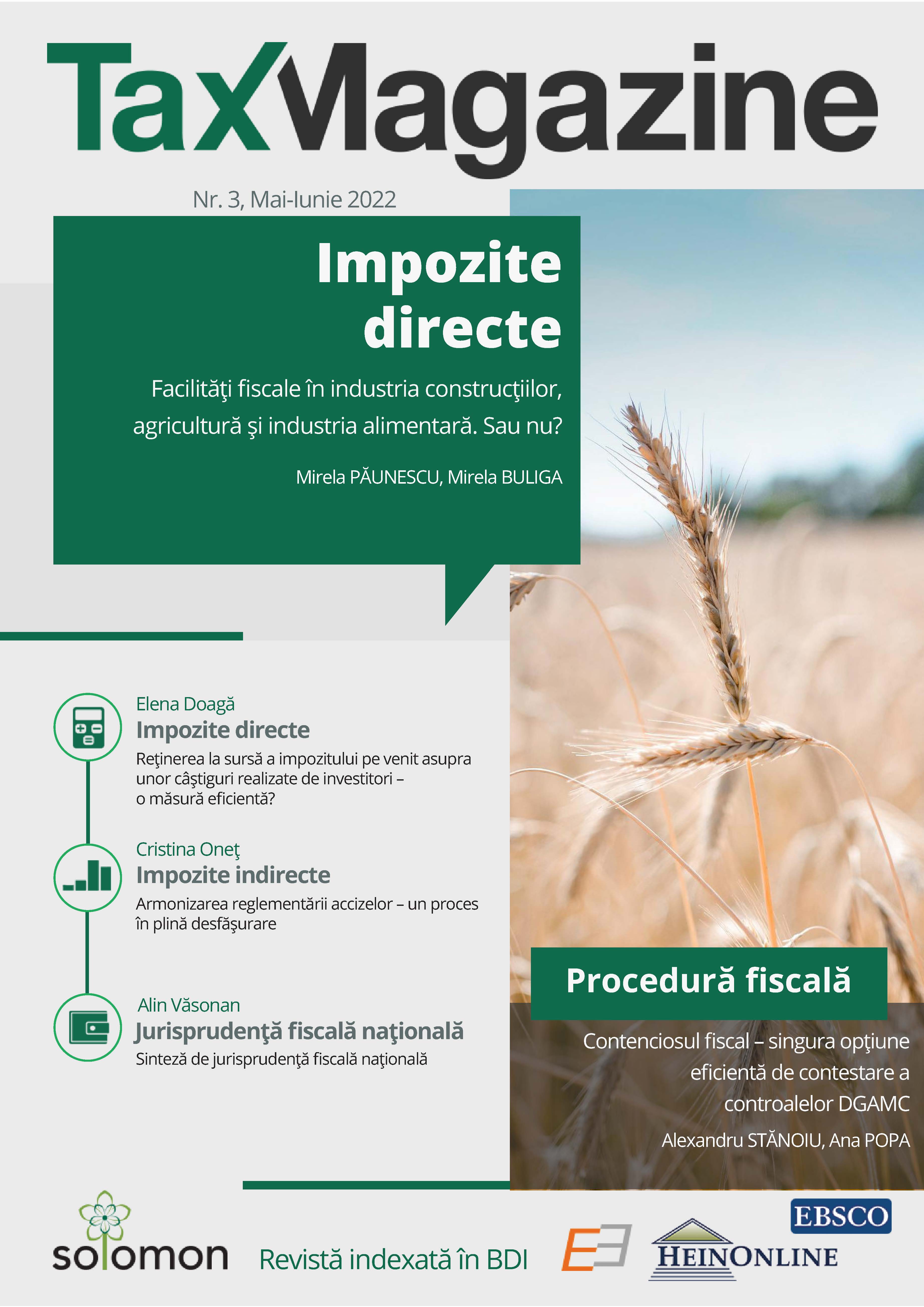Armonizarea reglementării accizelor – un proces în plină desfășurare.
Harmonization of excise duties regulation – a process in full swing
Author(s): Cristina OneţSubject(s): Law on Economics, Source Material, EU-Legislation, Commercial Law
Published by: Editura Solomon
Keywords: excise duties; European Union; Directive no. 262/2020 ;
Summary/Abstract: Two years ago, at the level of the European Union, Directive no. 262/2020 establishing the general regime of excise duties was adopted. It regulates the most important aspects of excise duties on alcohol and alcoholic beverages (previously regulated by Directive no. 83/1992 and Directive no. 84/1992), processed tobacco (previously regulated by Directive no. 64/2011) and energy products and electricity (previously regulated by Directive no. 96/2003). At the same time, Directive no. 262/2020 repeals and replaces two more, starting with February 13, 2023, respectively Directive no. 118/2008, and Directive no. 12/2010. It is also closely linked to Decision (EU) no. 263/2020 on the computerization of the circulation and control of excisable products. This new European normative act, although it does not fundamentally change the philosophy of surcharging certain goods, brings many adjustments to the previous legislation. All these “novelties” must be taken over in the national legislations of the member states, thus the Government Ordinance no. 4/2022 which entered into force on January 28, 2022, was adopted in Romania. Some of the provisions of this normative act are of immediate applicability, but there are numerous regulations that will enter into force on February 13, 2023, as required by the European normative act. The provisions of G.O. no. 4/2022 amends the provisions of the Fiscal Code regarding excise duties. This paper presents a summary of the most important changes to European excise duties legislation, as well as how they have been reflected in Romanian legislation. Given the large number of legislative changes under analysis, in this paper we have focused on an important set of conceptual clarifications, and in the next issues we will refer to other aspects such as calculating and establishing excise duties or storage regimes. The conceptual clarifications we have referred to cover aspects such as the suspensive customs procedure, importation of excise goods, release for free circulation of goods, irregular entry, Member State of destination, all of which relate to the free movement of excisable goods within the European Union. The paper addresses other notions regarding the mechanism of operation of excise duties, such as release for consumption, time of release for consumption, time of exit from a suspensive regime of excise duty, destruction or irreparable loss of goods, the person paying excise duty, or even refund or remission of excise duties.
Journal: Tax Magazine
- Issue Year: 2022
- Issue No: 3
- Page Range: 191-200
- Page Count: 10
- Language: Romanian
- Content File-PDF

